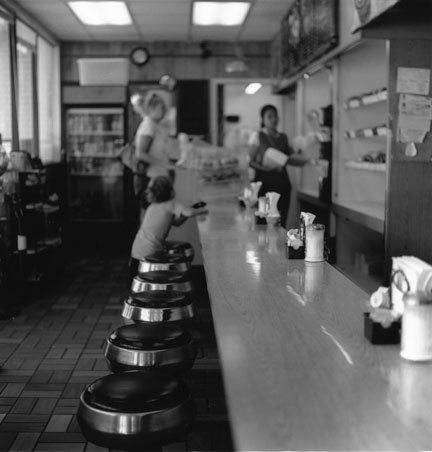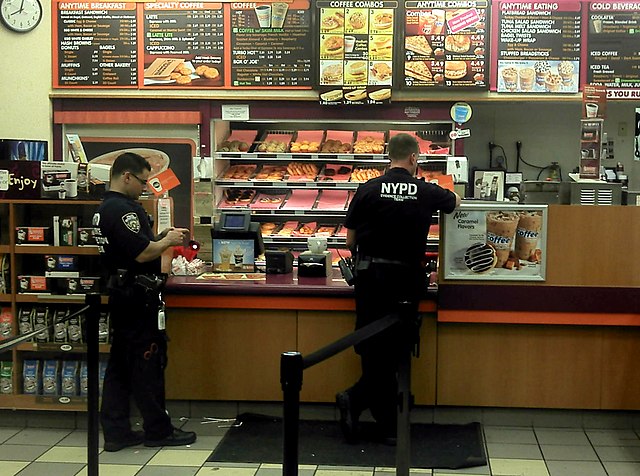Set Design for a Play or Musical
From page to stage: The journey from the first reading to the drawing board and finally to the stage.

Picture it. You’re the set designer. The script contains a scene where someone asks to buy a dozen glazed donuts. Your job is to design a donut shop. Yes, it’s that simple. The event? Buying donuts. The place: Donut shop. Go to one, have coffee, buy a dozen donuts, and share with the other designers. Sit at a table and draw pictures of the place. Or, perhaps you’re not that confident with your drawing skills yet. Take photos. This may make some uncomfortable. Easy- take pictures of your friends in the donut shop, but get as much of the shop in the background.

Imagine yourself in the role of the set designer, entrusted with the creative task of translating a script’s scene where a character seeks to purchase a dozen glazed donuts. Your mission? To craft the setting of a donut shop. Seemingly straightforward, right? The task revolves around the act of purchasing donuts in a specific place—the donut shop itself. To truly understand and capture the essence of this scenario, immerse yourself in the ambiance. Visit a local donut shop, indulge in a cup of coffee, and purchase a dozen donuts, sharing the experience with fellow designers. Take a seat, and with an artistic eye, sketch detailed pictures capturing the vibe of the place.
Alternatively, if drawing feels like uncharted territory or you’re not confident in your sketching skills just yet, opt for a different approach. Capture the essence through photography. However, this might pose a bit of discomfort to some. To navigate this, take candid snapshots of your friends within the donut shop, ensuring the shop serves as the main backdrop of the image. This method offers an alternative way to encapsulate the ambiance without the need for intricate sketches.
Scenic Design Research:
When tasked with designing the visual landscape for a play set in a high school student’s bedroom, the initial step might seem effortlessly attainable—draw inspiration from your own room! It’s a natural starting point, conveniently falling under the realm of primary research. Your personal space becomes the perfect model, lending invaluable support to your creative concepts and design endeavors.
However, the task at hand might drastically change when you’re challenged to design a set for a play set in an 1890s home. If, by chance, you reside in a house built around that era, the room’s layout might provide a basic blueprint. Yet, the furniture styles and wall colors would present stark contrasts. Moreover, over the years, numerous renovations and changes may have altered the authenticity of the room, extending beyond your own experiences and existence. In such instances, this realization is a gentle nudge towards an unavoidable yet vital stage—research.
Yes, I said it—research. Apologies if that’s a bit intimidating! This pivotal step is essential, pushing you into an investigative journey to ensure historical accuracy and authenticity in your design. It’s a compelling expedition into the past, a requirement to capture the nuances and details of a bygone era accurately.
Types of Research:
So, here we have two research flavors: primary and secondary. It’s like choosing between tasting that pizza yourself or hearing your buddy’s highly enthusiastic review.
What is Primary Research?
Primary research is about witnessing the spectacle—seeing it with your own eyes, feeling it, or directly experiencing it. It’s like being that person in the front row at a concert, feeling the bass thump in your chest. Picture this: a photo you snap of a room that’s prime real estate for primary sourcing. But hold your horses! A painting might not be as accurate. Paintings are like the artist’s personal Netflix adaptation of reality—a bit off from the original plot.
What is Secondary Research?
Secondary research is basically the stuff you hear from friends about that concert you missed. It’s hearing about the amazing bass without feeling it yourself. So, a painting, despite its artistic charm, is a secondary source. It’s the artist’s interpretation of what they saw. And let’s be real, would you trust someone to paint your portrait without editing out that pesky pimple? Yeah, artists in the past might have brushed up their subjects’ looks a bit. It’s like giving a friend a review and kindly leaving out that awkward dance move they did at the concert.
The Nuances of Primary and Secondary Research:
Alright, primary research? It’s the raw deal, the unfiltered info straight from the source. It’s like doing your experiments, interviews, or getting down and dirty with the subject. On the flip side, secondary research is like borrowing the notes from the cool kid in class—it’s the collated version of information already out there. Both are cool in their own way, but the primary stuff? It’s like being there in person; it’s the front-row ticket to understanding. Secondary research? Well, it’s like borrowing a buddy’s notes and offering various viewpoints, but it might miss a few backstage stories.
Research, whether primary or secondary, serves its purpose, like different toppings on a pizza. For set design, mixing both spices up the creative soup—blending firsthand experiences and interpretations adds flavor to historical accuracy and deepens the understanding of the creative canvas.
Sources of Primary Research:
Exploring where to uncover primary research sources is like embarking on a thrilling treasure hunt. For me, it’s a diverse journey leading through libraries, museums, and the digital realm, each offering a goldmine of historical insights and creative inspiration.
Libraries: A Rich Hub of Knowledge
Libraries are my go-to. They’re treasure troves brimming with references that spark the imagination. I dive into books teeming with photographs of diverse subjects, unlocking visual tales from different eras. It’s an adventure in print, a visual feast presenting a cornucopia of historical narratives.

Museums: Time Machines to the Past
Museums, oh, they’re a different level of excitement. Many house’s actual rooms are reconstructed meticulously, transporting visitors back in time. The Metropolitan Museum of Art in New York, a portal to historical grandeur, boasts rooms salvaged before buildings were razed or meticulously recreated to reflect specific eras. These rooms are like real-life time capsules, encapsulating every minute detail for curious minds to explore.
The Brooklyn Museum shares this allure, featuring several captivatingly reconstructed rooms that whisper tales of different eras. Museums and libraries, in their own unique ways, provide rich references, inviting exploration and discovery into the artistry of bygone times.
Practical Applications in Set Design: Learning From Artists’ Works
When I was fully engaged in designing a production of Candide, the director desired to infuse the production’s aesthetic with the essence of Hogarth’s paintings. To immerse myself in Hogarth’s world, I delved into library books housing reproductions of his artistic masterpieces, exploring the intricacies of his brushstrokes and visions. The internet was another treasure trove, providing additional insights into his life and creative processes.
At the time when I wanted to experience the paintings in their true splendor, the museum became my haven. For instance, while I was teaching my Stage & Set Design class and exploring the play “Harvey” by Mary Chase, set in the early 1900s, the challenge was to envision the Dowd Mansion’s Library and the Doctor’s Office at Chumley’s Rest. Since these settings were not a part of my or my students’ lived experiences, a museum trip became an integral part of our learning process. The trip acted as a visual time machine, offering firsthand encounters with the visual elements and atmospheres of that historical period.
These experiences—drenched in history and artistry—create a rich tapestry of understanding, infusing our designs with historical authenticity and detailed creativity. Each visit to a museum becomes an adventure, an exploration of the past that shapes the future designs on the theatrical canvas.


Recent Comments